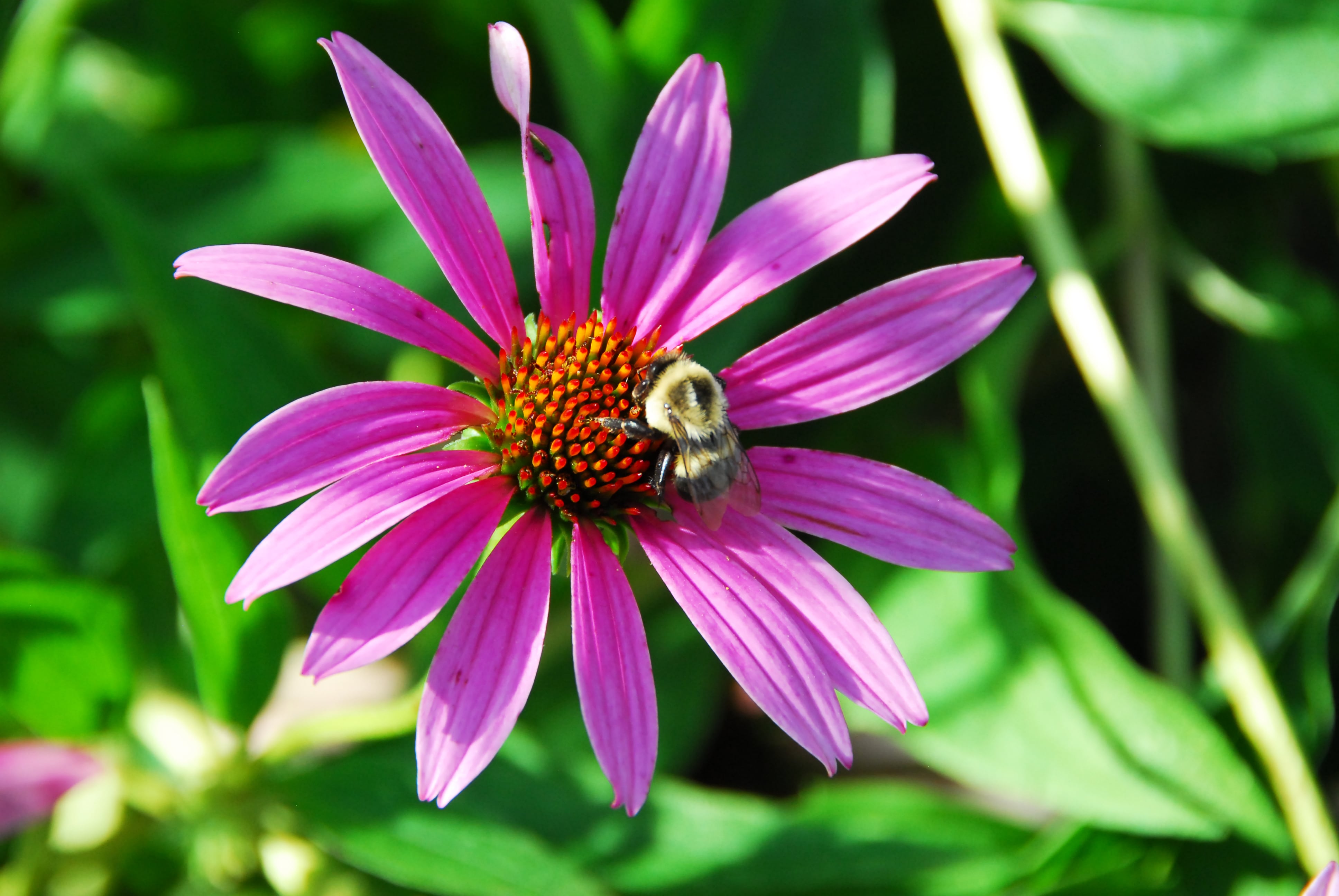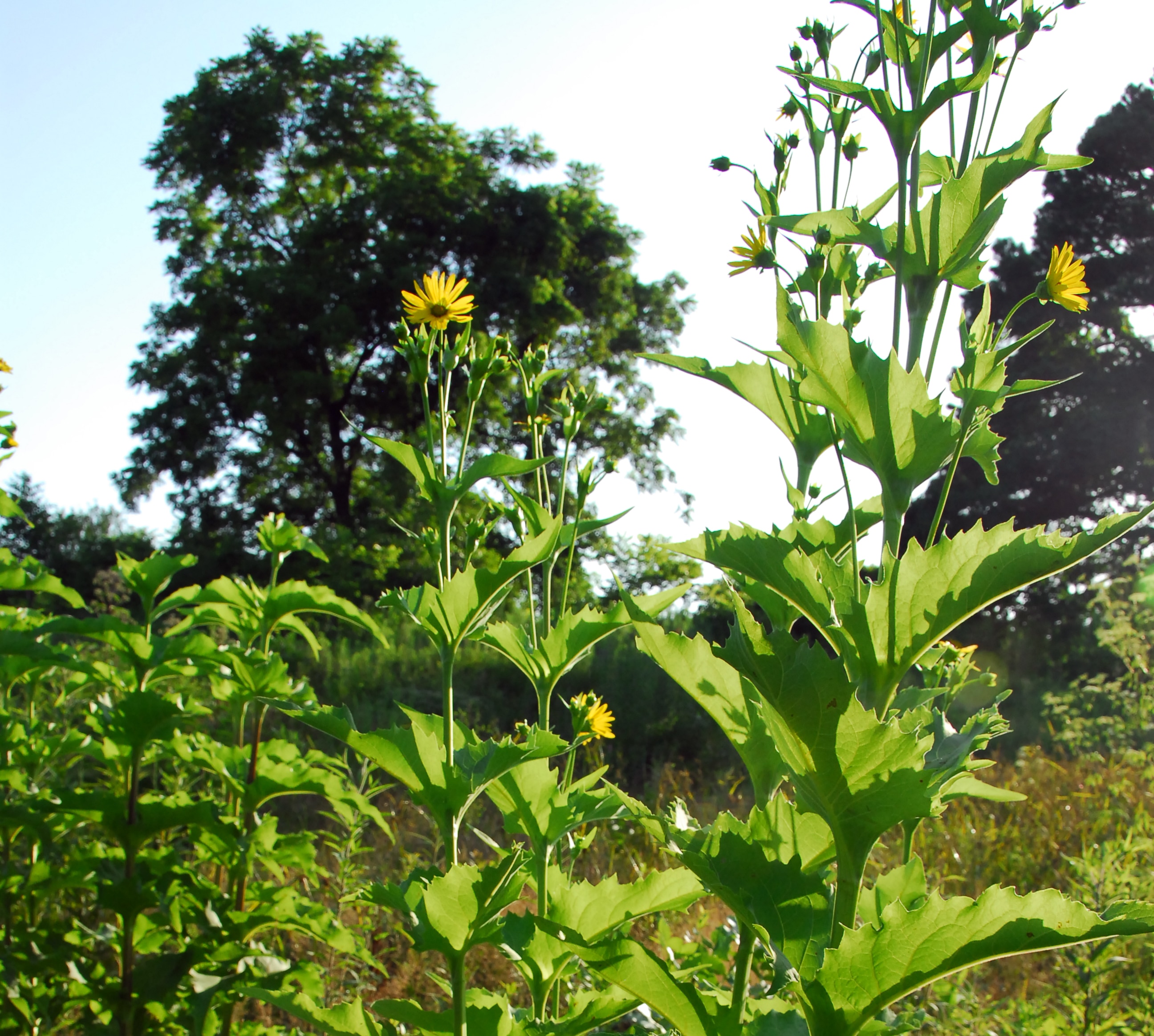The use of dicamba herbicide will be greatly expanded in the Midwest this year with the planting of dicamba resistant soybeans on millions of acres. Dicamba has been registered for use since 1965 and is sold widely in hundreds of products for broadleaf weed control for crops, rights of ways, and lawns. The increased use this year threatens specialty crops, prairie, and pollinator habitat.

Many specialty crops, including tomatoes and grapes, are extremely sensitive and can show the classic symptoms of curved and twisted stems and leaves. See photos of Banvel injury on beans, tomatoes and muskmelon from the University of Missouri Extension. Other broadleaf plants (e.g. shrubs and native flowering plants such as milkweeds, sunflowers, etc.) are also at risk, and the expanded use of this herbicide could pose a serious threat to remnant prairies and the few remaining fieldside pollinator habitats and nectar sources. Homeowners, growers of specialty and organic crops, and stewards of natural areas in Illinois need to be alert to the potential threat dicamba herbicide injury poses to broadleaf (dicot) plants on their properties.

Three new “low” volatile formulations of dicamba have been registered for use on dicamba tolerant soybeans. While the lower volatility of these products is an improvement, the threat of volatization and physical drift remains. Damage can occur when spray particles blow downwind from application sites. Although these low volatile products are the only products currently labeled for use on resistant soybean varieties, there is a risk that off-label, illegal applications of the older, high volatile formulations could still occur.
According to Dr. Aaron Hager, weed scientist at the University of Illinois:
Of particular concern is the apparent confusion about particle drift and volatilization. While the newly labeled formulation is reportedly less likely to volatilize after application, there is absolutely nothing unique about the formulation that will reduce physical drift during application. Off-target movement of dicamba is of particular concern due to the number of sensitive dicot species grown in Illinois. The new formulation of dicamba is no more likely to drift than any other herbicide formulation, but the symptoms that drift did occur can be induced at extremely low concentrations of dicamba. Several years ago, we were able to induce soybean leaves to “cup” with as little as 1/10,000 pint of dicamba. Many media reports suggest that use of older, more volatile dicamba formulations was largely responsible for the widespread off-target injury that occurred in areas of the mid-south during 2016, but volatility is generally a minor component of off-target movement when compared with actual physical drift during application. (Dicamba and Soybean: What to Expect in 2017)
What do You Need to Know?
These risks forced the registrants of the new dicamba products to mandate restrictions on its application well beyond those normally required of most herbicides. These requirements have been summarized from the three currently registered products by the Office of the Indiana State Chemist in their report: New Labels, New Requirements, & New Uses of Dicamba on Soybeans.
PRN recommends landowners and managers study these restrictions to determine just how they might protect plantings from damage. Growers of commercial specialty and certified organic crops should register all of their sites with Field Watch, as applicators of dicamba are specifically required to consult this site to discover the location of any registered sites before they apply the herbicide.
What Can You Do?
Be Alert and Report Herbicide Damage in Illinois
We encourage everyone to be watchful of pesticide applications close to their properties and to record the dates, times, wind speeds, and name of the applicator if known.
If you see herbicide injury on your plantings or fragile non-target species, report it to the Illinois Department of Agriculture on its Pesticides: Uses & Misuses website.
Call the IDOA’s Bureau of Environmental Programs at 1-800-641-3934 (voice and TDD) or 217-785-2427 for a complaint form. Complaints must be received by IDOA within 30 days of the incident or within 30 days of when the damage is first discovered. Complaints filed after that will be kept on record, but no administrative action can be taken.
Dicamba herbicide poses a very real threat to specialty crop producers in Illinois, the few native plant populations that remain between farm fields and roadsides, and edge of field habitat which offers highly valuable feeding and breeding territory for pollinators. Please be aware, document, and report any evidence of suspected damage.







